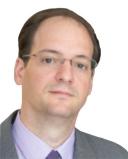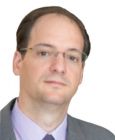Neuroscience
Do we use only 10 percent of our brain?
Is it true that we use only 10% of our brain?
Posted June 21, 2011
For a free primer on Consciousness and the Brain, click here.
It is quite remarkable that a handful of ideas from the field of neuroscience spread like wildfire through the popular media, thereby becoming part of our culture and worldview, while other ideas remain neglected, known only to a small group of experts. A recent example would be the idea of mirror neurons, which has successfully stimulated the curiosity of many people outside the ivory tower. Why some ideas are more catchy than others remains a mystery.
Since I was little, I always heard that humans use only 10% of their brains. To me, this idea agreed with the age-old notion that we as humans have great potential. Years later, I learned from reading a series of excellent books on the history of neuroscience and psychology that this notion may actually be a misinterpretation of the classic research by the great Wilder Penfield (1891-1976), an American born neurosurgeon who was the first director of the world-famous Montreal Neurological Institute of McGill University. Because of his many contributions to medical research in Canada, Penfield was regarded at one time as "the greatest living Canadian." Today, he is remembered as one of the all-time greatest thinkers about the brain.

Penfield pioneered a technique for the treatment of severe epilepsy which required damaging the brain areas responsible for the onset of the seizures. One obvious concern in carrying out this procedure is that the surgeon may be damaging a brain area that is critical for the welfare of the patient. Penfield devised a technique to assess whether the area to be damaged was critical for brain function. While the patient was awake (there are no pain receptors in the brain, so neurosurgery can be carried out painlessly while patients are conscious), Penfield would mildly stimulate the targeted brain area with an electrode and would note the effects of the stimulation. With this technique, which continues to be used today, the surgeon can evaluate whether the electrical stimulation leads to something notable (e.g., a visual hallucination, auditory hallucination, or movement of a finger) or whether the stimulation disrupts function (e.g., the patient can no longer utter a word). Either kind of effect suggests that the region being stimulated should not be damaged.
From this technique, Penfield and his colleagues discovered (among many things) the topography of the motor strip in the motor cortex and the nature of the adjacent somatosensory 'homunculus.'

In one famous example, a female patient reported that stimulation led to a vivid experience in which she was enjoying the sights and sounds of a concert at Royal Albert Hall in London. Penfield was surprised that the patient felt as if she were at the concert while also knowing that she was in the operating room. He referred to this as "double consciousness," because the subjective experience of the patient was about two separate places. Penfield and others noted that the stimulation of few areas (circa 10%) led to a detectable effect (e.g., the activation or disruption of a perceptual or motor event).

What I learned from the historical record is that it was this observation that led to the incorrect view that humans use only 10% of their brains. In truth, many areas that lead to no effect when stimulated by electrode are important "association areas" that connect other areas of the brain, permitting communication between two brain regions. Such interaction between areas is notable in the classic McGurk effect, in which what one sees influences what one hears. (Click here for a dramatic demonstration.) Areas whose stimulation leads to no discernible effect may also consist of networks whose function is not directly perceptual, mnemonic, or motor.

The historical record leads one to believe that the notion that humans use only 10% of our brain is more myth than fact. But this is not to say that we are not creatures of tremendous potential. Consider space flight, the Sistine Chapel, or the pioneering research of Wilder Penfield.
For a humorous tale involving neurology, by Morsella, click here.


